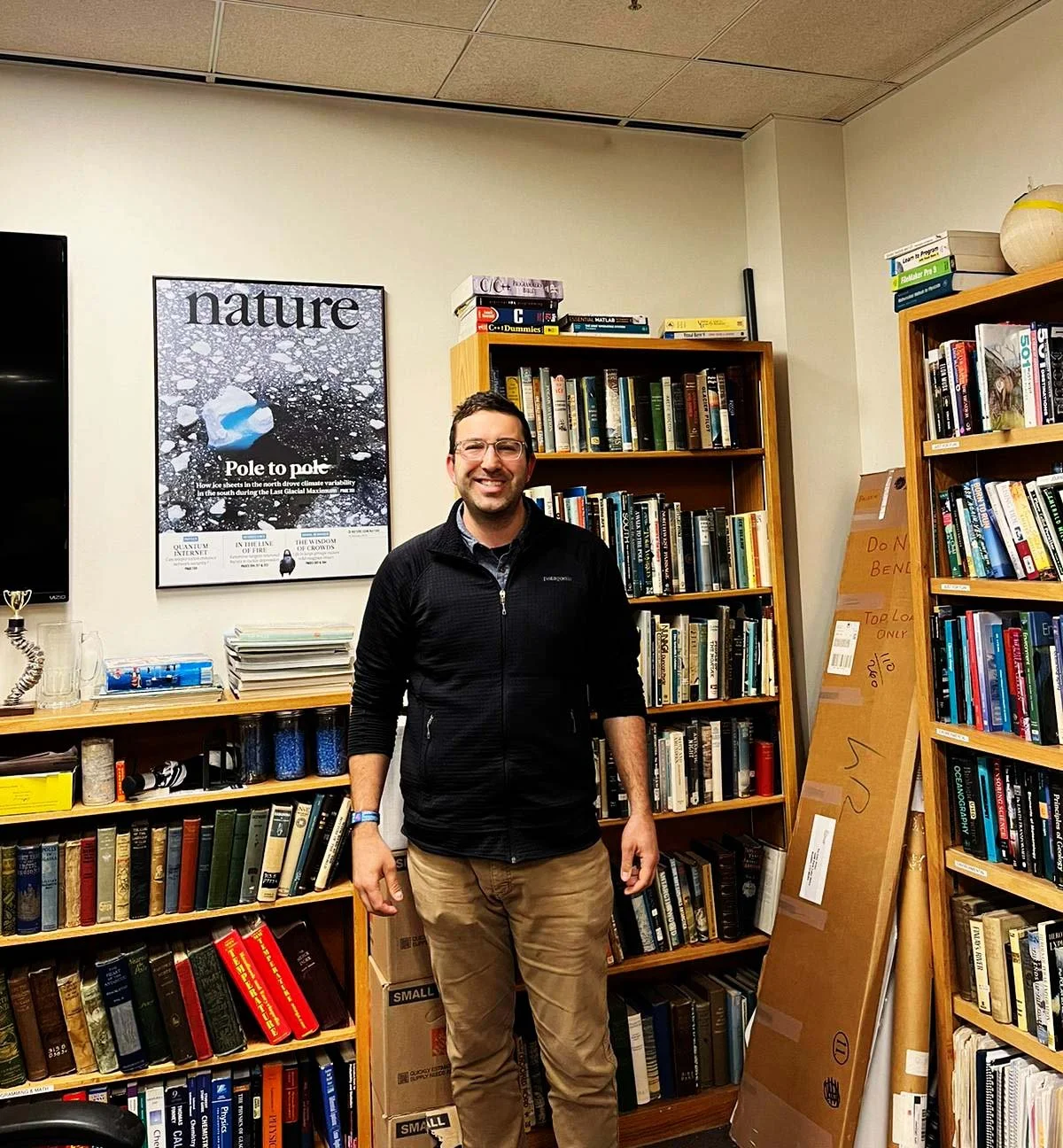The History of Climate in an Ice Core
Research Associate and Manger of the Stable Isotope Lab at the Institute of Arctic and Alpine Research (INSTAAR) Bruce Vaughn describes an ice core as a “paleoclimate record.” Imagine leafing through a book without page numbers. An ice core can go back centuries and have a high annual resolution, but scientists need to figure out the page number. When exactly did those conditions exist in history? When analyzing an ice core, scientists are looking at its physical properties, isotopes, chemistry, gases, as well as archiving some of the ice for new research methods.
Stable isotopes are molecules that have different numbers of neutrons in the nucleus. Vaughn explains, “Precipitation has different isotopic signatures.” This means that rain and snow can have different weights depending on the location. For example, Boulder, CO sits at a higher elevation. The altitude causes a loss in heavier isotopes creating a drier climate in general. By looking at the hydrogen and oxygen isotope in ice cores, scientists are able to determine the temperature of the climate in that specific location during that specific time. This is known as a “proxy.”
Ice Core Scientist Tyler Jones. Image taken by Diana Boyer on Feb. 9, 2023 in the INSTAAR building.
Ice Core Scientist Tyler Jones has been studying a specific ice core in West Antarctica for some years now. He’s studying the seasonal temperatures during the Holocene, which is our current geological era dating back to around 11,000 years. Jones says, “This ice core has informed our understanding of high frequency variability.” By looking at water-isotope ratios, Jones is able to gather data revealing the summer and winter temperature changes through the last 11,000 years.
One factor that has made and will continue to make Jones’ studies difficult is diffusion. Diffusion happens in the upper part of the ice sheet. Jones compares diffused ice to Styrofoam saying, “Water molecules in the vapor phase can move around. It deletes all high frequency information.” Scientists can minimize diffusion by selecting good ice core sites with colder temperatures, such as their site in West Antarctica.
From the gathered data and models, scientists expect heat to continue rising. Jones stresses the importance of ice core studies saying, “If we don’t understand the past, we cannot make any forecast about the future.” Winters are changing faster than summers. If there’s one thing to take from this research, it’s that climate change is anything but linear. Vaughn states, “There has been a six-to-seven-degree Celsius change on the order of 10 years.” Even with this consistent rising in heat, climate change can happen abruptly. It’s only a matter of time till we see dramatic changes. By looking at ice cores, Jones hopes the past can help us avert disaster.
Feature Image Description: Researcher Associate and Manager of the Stable Isotope Lab Bruce Vaughn holding a sample ice core in the isotope lab's freezer. Image taken by Por Jaijongkit on Feb. 9, 2023.
